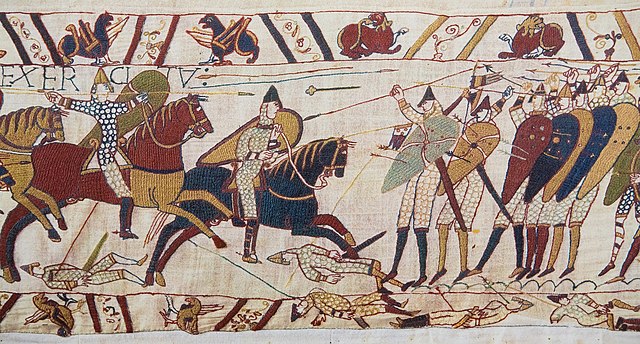The Bayeux Tapestry

Annotation
Most likely commissioned by Bishop Odo of Bayeux, the Bayeux Tapestry depicts William the Conqueror’s conquest of England, culminating in the Battle of Hastings. Though the exact origins of the tapestry are unclear, it was likely commissioned by Odo in the 1070s at the same time the Bayeux Cathedral itself was commissioned to be built, with the intention of displaying the tapestry at the cathedral’s dedication. The designer of the tapestry is unknown, but it was most likely Anglo-Saxon female needleworkers.
The Bayeux Tapestry tells its story through scenes in a sequential narrative style. Though it was likely constructed in England, the tapestry is from the Norman point-of-view in that William was betrayed and justifiably invaded. As such, though the tapestry gives an account of the period from 1064 to 1066, scholars acknowledge that the work may have functioned more as political propaganda rather than an accurate retelling. Despite the questionable accuracy of the events shown, the Bayeux Tapestry stands as an excellent visual record of medieval armaments and clothing.
Credits
The Bayeux Tapestry, The Bayeux Museum, https://www.bayeuxmuseum.com/en/the-bayeux-tapestry/